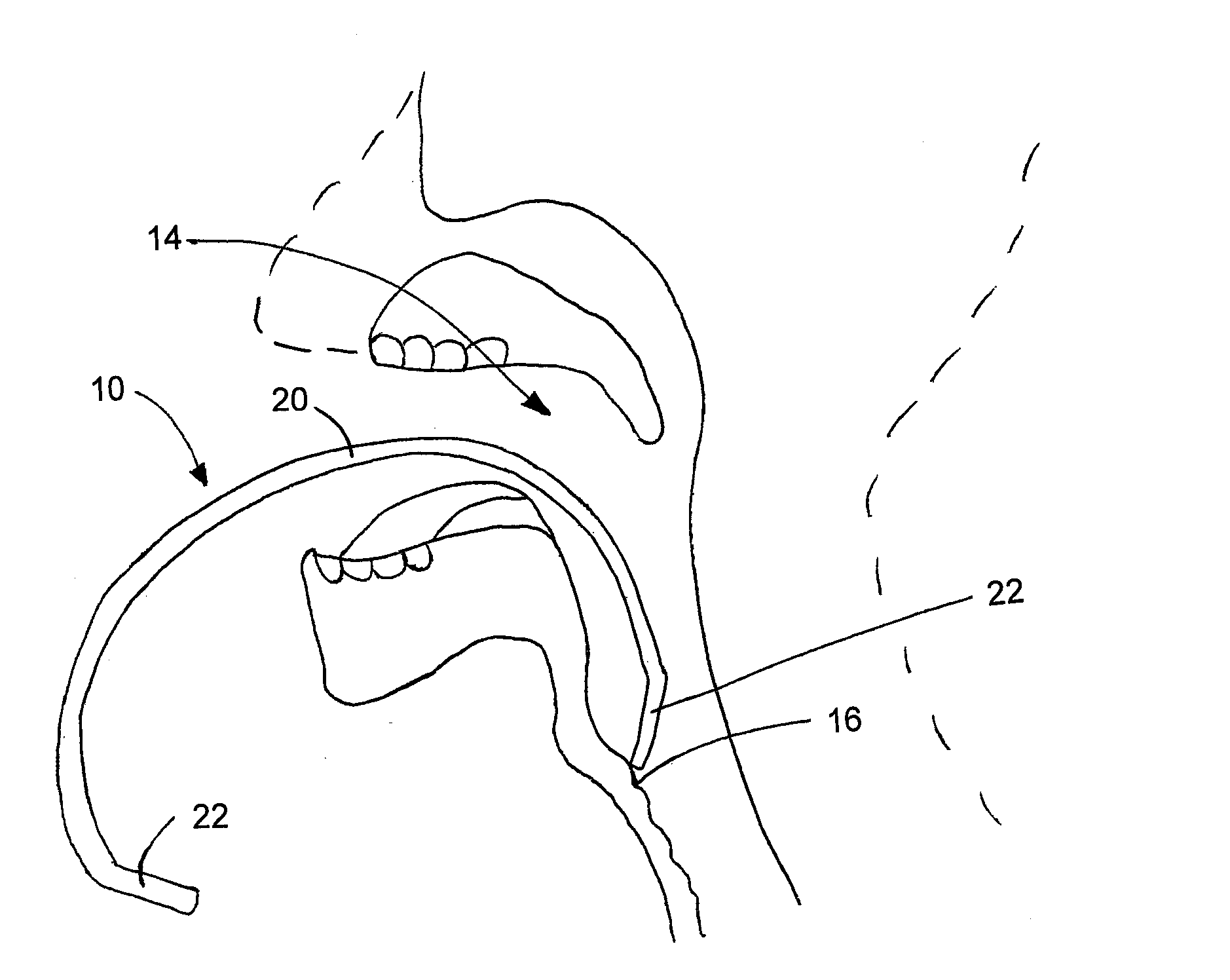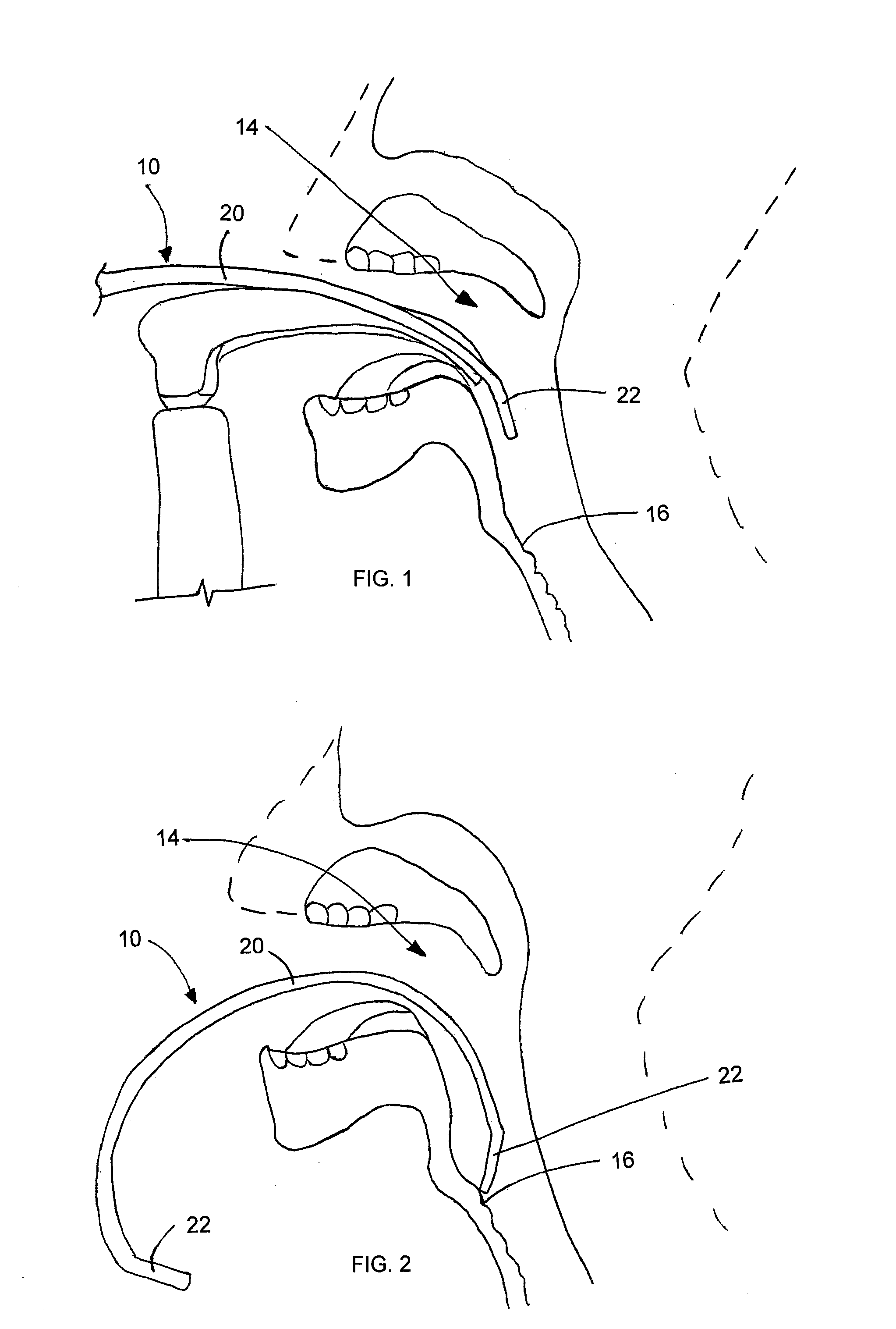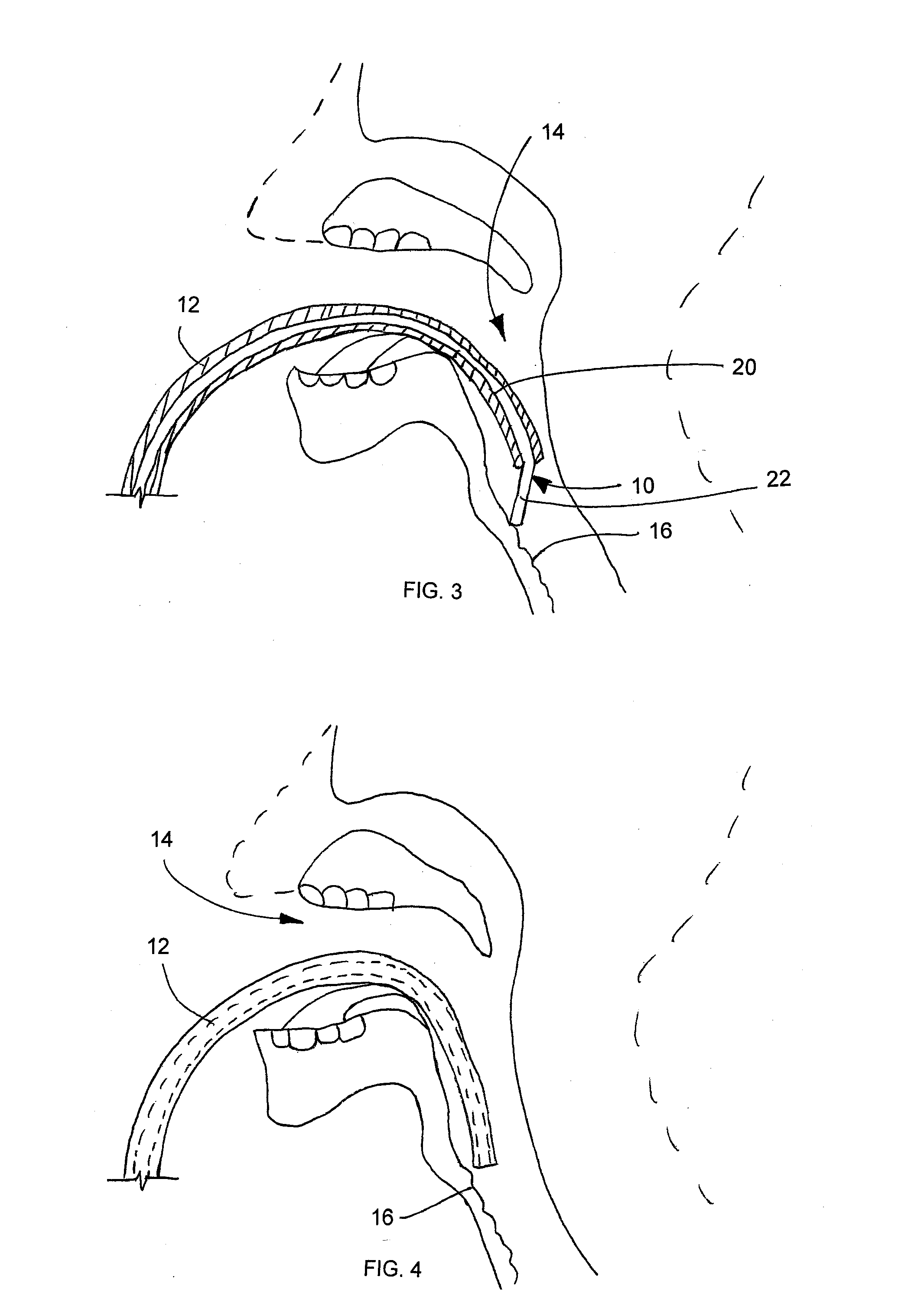Bougie Device
a bougie and spherical technology, applied in the direction of respirators, tracheal tubes, catheters, etc., can solve the problems of allergies, unsuitable for adjusting the shape, and known devices generally require lubrication, so as to facilitate reuse, facilitate cleaning, and facilitate re-use
- Summary
- Abstract
- Description
- Claims
- Application Information
AI Technical Summary
Benefits of technology
Problems solved by technology
Method used
Image
Examples
Embodiment Construction
[0048]Referring to the accompanying figures there is illustrated a bougie device generally indicated by reference numeral 10. The device 10 is particularly suited for guiding insertion of an instrument into a passageway in a patient. The device described herein is particularly suited for guiding an endotracheal tube 12 for insertion into the airway 14 of a patient so that an end of the endotracheal tube is positioned at the tracheal rings 16 in the trachea of the patient.
[0049]The device 10 generally comprises a rod of uniform material consisting of Teflon™, or polytetrafluoroethylene. In the illustrated embodiment, the rod is in the order of two to three feet in length and has a diameter of 3 / 16 of an inch when used on adults or ⅛ of an inch when used on children. The ends of the rod are rounded.
[0050]Forming the device of Teflon™ is particularly useful as the resulting bougie is self lubricated, in that it requires little or no lubrication for insertion into a patient's airway. Fu...
PUM
 Login to View More
Login to View More Abstract
Description
Claims
Application Information
 Login to View More
Login to View More - R&D
- Intellectual Property
- Life Sciences
- Materials
- Tech Scout
- Unparalleled Data Quality
- Higher Quality Content
- 60% Fewer Hallucinations
Browse by: Latest US Patents, China's latest patents, Technical Efficacy Thesaurus, Application Domain, Technology Topic, Popular Technical Reports.
© 2025 PatSnap. All rights reserved.Legal|Privacy policy|Modern Slavery Act Transparency Statement|Sitemap|About US| Contact US: help@patsnap.com



